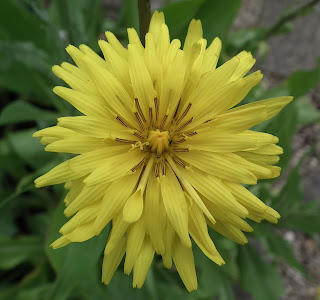Strawberries

I have mixed feelings about strawberries. They are beautiful to see - both as flowers and as fruit tumbling down the side of their containers. But there are a few downsides. The first is a personal one. I love eating ripe strawberries warmed by the summer sun, but I must not eat too many. If I do, I have an allergic reaction - my lips tingle and then swell up so much that I look like Mick Jagger. I have the same reaction to too much pineapple and sometimes (fortunately rarely) to too many ripe tomatoes. This doesn't stop me eating these lovely fruits, but I do have to be careful. When the plants are all fruiting at the same time, my willpower and dislike of wasting good food can sometimes overpower my common sense. I suppose I could just give them all to my husband to eat, but where's the fun in that? The second reason is the slugs and blackbirds like them too. The third is that they take up a lot of space when allowed to sprawl across the garden bed. The fourth i





